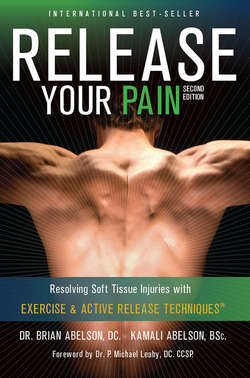Читать книгу Release Your Pain: 2nd Edition - EBOOK - Dr. Brian James Abelson DC. - Страница 38
На сайте Литреса книга снята с продажи.
Muscles of the Jaw and Neck
ОглавлениеFrom a kinetic chain perspective, the movements of your jaw and neck are closely linked to each other. For example, the activation of the neck and jaw muscles occurs in concert with movements of the temporomandibular joint (TMJ), cervical spine, and the atlanto-occipital joint (the joint that lies between the base of the skull (occiput) and the C1 vertebra (atlas).3
Your neck is a remarkable piece of engineering. It must be strong enough to support the weight of a small bowling ball, yet remain flexible enough to bend, flex, extend, and rotate with precision.
Think of your neck as a mast on a sailboat, surrounded by the rigging lines which control and stabilize the mast. These rigging lines are made up of the muscles and work remarkably well as long as you maintain a fine balance of strength and flexibility in these structures.
There are many muscles in your neck and jaw and it is far beyond the scope of this book to provide a detailed description of each of these structures. I will try to limit my discussion to those structures that I believe to be the most common causes of jaw and neck pain. I will first cover some of the important jaw and neck muscles on the anterior or lateral sides of the neck. I will then discuss the various layers (superficial, intermediate, and deep) of the posterior neck and back muscles. I am reviewing the posterior muscles of the neck and back in this manner because many of these muscles can extend all the way from the bottom of your spine (lumbar region) right up into the base of your skull, creating a very long kinetic chain.
